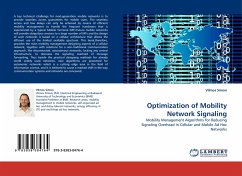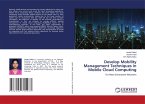A key technical challenge for next-generation mobile networks is to provide seamless access guarantees for mobile users. The seamless access and low delays can only be achieved by means of efficient mobility management to handle the frequent handovers that is experienced by a typical Mobile Terminal (MT).Future mobile networks will provide ubiquitous services to a large number of MTs and the design of such networks is based on a cellular architecture that allows the efficient use of the limited available spectrum. This book,therefore, provides the main mobility management designing aspects of a cellular network, together with solutions for a non-traditional communication approach, like disconnected, autonomous networks, lacking any central infrastructure, to decrease the signaling overload of message forwarding. Thus beside the practical designing methods for already world widely used networks, new algorithms are presented for autonomic networks which is a cutting edge area in the field of information science, and it is believed to cause a marked shift in the way communication systems and networks are conceived.
Bitte wählen Sie Ihr Anliegen aus.
Rechnungen
Retourenschein anfordern
Bestellstatus
Storno








